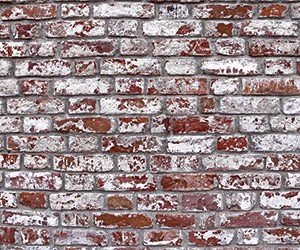Energy Efficient Tax Credits and Incentives Pay Back in Big Ways With SIPs
Opting for SIPs not only results in high-performing buildings that are stronger and healthier, but it also opens the door to..
Originally posted on Buildings.com, by Janelle Penny
Is your building still using more energy than it should be? A hidden leak in your envelope could be the culprit.
 EFFLORESCENCE on brick facades can indicate degradation from moisture leakage. If the chalky white substance appears on your building, investigate possible sources of leaks.
EFFLORESCENCE on brick facades can indicate degradation from moisture leakage. If the chalky white substance appears on your building, investigate possible sources of leaks.
Cracks and gaps aren’t just an opportunity for wind-driven weather to infiltrate your building, they’re also an easy conduit for unconditioned air to enter and for conditioned air to leave, wasting heating and cooling dollars. Examine your envelope with these tips to ensure tightness.
“Air leakage is one of the major culprits when it comes to efficiency in buildings,” notes John Chamberlin, Director of Business Development for Sto Corp, a building envelope and coating provider. “When you have unwanted air movement through the building, there’s cold air coming in and warm air getting out when you don’t want it to. Meanwhile, your HVAC or heater is trying to address those issues.”
To make matters worse, air infiltration can easily lead to moisture infiltration, whether the air carries vapor with it or weather squeezes through the same spaces air does, adds James Hodgson, General Manager of Premier SIPs, a structural insulated panels manufacturer. This can further lower your building’s energy efficiency and leave it vulnerable to mold and structural damage.
“This typically happens in and around the actual envelope, meaning you either have issues in the openings where things fit incorrectly or there’s settling with the foundation,” Hodgson explains. “Often, windows are either forced in or loosely applied when they’re installed. That starts to compromise areas where moisture can enter. Natural movement around the structure also contributes.”
If you think your envelope might be leaking, start by examining openings, Hodgson recommends. Details are much more vulnerable to air and moisture intrusion than the larger, uninterrupted areas of the envelope, Chamberlin adds, so paying attention to cracks, joints, seams and penetrations is important.
“Look for cracks on the envelope. You can often see where sheet rock is starting to crack on a paint line, especially on an exterior wall – that might be an indicator that there’s settling that is compromising a joint area,” adds Hodgson. “On the ceiling, if you’ve got exposed trusses, you can see whether there’s any water damage on the underside of the roof. Take a good look at the windows and make sure they’re sealed correctly with caulk and they aren’t bowed – sometimes if settling occurs, a window will bow and creates the potential for moisture intrusion.”
Depending on your building type, you might also spot efflorescence (a chalky substance) on brick or cracks in a stone facade that would indicate degradation from moisture leakage, Chamberlin says. A building with an EIFS or stucco system may see the outlines of metalfasteners and anchors appearing on the exterior, an indicator that the envelope wasn’t sealed properly.
“The studs act as a conductor for the heat, and when they interact with water or cold, the thermal bridging causes a different weathering pattern on the exterior,” Chamberlin explains. “In some cases you can actually see them with the naked eye. That’s usually a good sign that there’s drafting.”
This can be spotted early with an infrared camera, Chamberlin adds. This tool can also detect hot and cold spots and areas with moving air to help users quickly identify and remedy leaks. A few basic tests can also shed light on whether your envelope isn’t tight enough, Hodgson says.
“Check outlets for air movement. If you open up one of the boxes you can often feel air moving in the walls,” Hodgson says. “If you can do a blower door test, it will indicate how tight your building is. If you can’t, you can literally put a candle in front of an opening and see whether air is moving.”
Once you’ve discovered the source of the problem, you can start weighing potential fixes. A window with an aging seal can probably be fixed with a little caulk, for example.
“Anywhere there’s an opening, chances are you’ll need some form of sealant,” Hodgson notes. “If you’re going to change out windows, check the flashing as well and make sure that’s in good condition. An open space like a ceiling area could potentially benefit from rigid insulation.”
If you have the budget for a larger retrofit, adding a liquid-applied air barrier and then repainting or recladding on top of it can help keep out air and moisture, Chamberlin suggests.
Opting for SIPs not only results in high-performing buildings that are stronger and healthier, but it also opens the door to..
Since buildings consume 80% of our energy, it makes sense that we want to try to reduce the energy required to heat and cool..
Our SIP panels offer higher R-values, contributing to increased energy efficiency, lower heating and cooling costs, and..
As the oldest manufacturer in the SIPs industry, Premier’s SIP system is the proven prefabricated building envelope framing system for your next commercial or residential structure. Faster, stronger, and greener than outdated lumber framing methods, SIPs are the future of framing. Join the other thousands of structures built with SIPs, and contact the expert in your local region to get started.